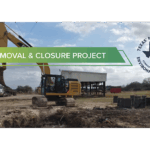
Environmental compliance is a critical aspect of ensuring the protection and sustainability of our environment. As the world becomes more conscious of the impact human activities have on the planet, it is essential for individuals and organizations to understand and adhere to environmental regulations. Pasadena, a city known for its commitment to environmental conservation, recognizes the significance of environmental compliance auditing in achieving sustainable development.
Understanding Environmental Compliance
Before delving deeper into the role of auditing in environmental compliance, it is essential to comprehend the definition and importance of environmental compliance.
Environmental compliance refers to the practice of conforming to environmental laws, regulations, and standards set by governing bodies. This encompasses various aspects, such as air and water quality, waste management, and habitat preservation. Compliance with these regulations not only ensures legal adherence but also demonstrates a commitment to preserving the environment and promoting sustainability.
Ensuring environmental compliance is crucial in safeguarding ecosystems and biodiversity. By adhering to regulations and standards, organizations contribute to the protection of endangered species, preservation of natural habitats, and overall ecological balance. Compliance efforts extend beyond mere legal obligations; they reflect a deep-rooted responsibility towards the planet and its inhabitants.
Key Elements of Environmental Compliance
Environmental compliance comprises several key elements that aim to protect and conserve natural resources. These elements include:
- Monitoring and reporting of environmental performance
- Identification and mitigation of potential environmental risks
- Adherence to applicable laws and regulations
- Implementation of sustainable practices
Effective monitoring and reporting of environmental performance involve regular assessments of resource consumption, emissions, and waste generation. By analyzing these data, organizations can identify areas for improvement and track progress towards environmental goals. Mitigating potential environmental risks requires proactive measures to prevent pollution, habitat destruction, and other detrimental impacts. This proactive approach not only minimizes negative consequences but also fosters a culture of environmental stewardship within the organization.
The Role of Auditing in Environmental Compliance
A fundamental aspect of ensuring environmental compliance is conducting regular environmental audits.
Environmental audits play a crucial role in not only ensuring compliance with environmental regulations but also in promoting sustainability and responsible business practices. By conducting thorough audits, organizations can identify areas where they can minimize their environmental impact, reduce waste, and enhance their overall environmental performance.
Purpose of Environmental Audits
Environmental audits serve multiple purposes, including:
- Evaluating compliance with environmental regulations
- Identifying potential risks and areas for improvement
- Assessing the effectiveness of existing environmental management systems
Furthermore, environmental audits help organizations build trust with stakeholders, including customers, investors, and regulatory bodies, by demonstrating their commitment to environmental responsibility and transparency.
Types of Environmental Audits
There are various types of environmental audits that organizations can undertake, such as:
- Compliance Audits: These audits focus on ensuring adherence to environmental laws and regulations.
- Operational Audits: These audits evaluate the efficiency and effectiveness of an organization’s environmental management processes.
- Due Diligence Audits: These audits are conducted during mergers and acquisitions to assess environmental liabilities and risks.
Each type of audit serves a unique purpose in helping organizations achieve and maintain environmental compliance while driving continuous improvement in their environmental performance. By conducting a combination of these audits, organizations can create a comprehensive environmental management strategy that aligns with their sustainability goals and regulatory requirements.
Pasadena’s Approach to Environmental Compliance
Pasadena, known for its commitment to sustainability, has established robust measures to ensure environmental compliance. The city’s dedication to environmental stewardship is evident in its comprehensive approach to addressing ecological concerns and promoting sustainable practices.
One key aspect of Pasadena’s environmental compliance strategy is its emphasis on proactive measures to prevent pollution and protect natural resources. By implementing stringent regulations and fostering a culture of environmental responsibility, the city aims to safeguard its unique ecosystems and preserve them for future generations.
Local Environmental Regulations in Pasadena
Pasadena has implemented local environmental regulations to protect its natural resources and minimize ecological impact. These regulations address various aspects, including air and water quality, noise pollution, hazardous materials, and waste management. By enforcing these regulations, the city strives to maintain a healthy and sustainable environment for all residents and wildlife.
Furthermore, Pasadena’s environmental regulations are continuously updated and refined to reflect the latest scientific research and technological advancements. This dynamic approach ensures that the city remains at the forefront of environmental protection and is able to adapt to emerging challenges and opportunities.
Pasadena’s Environmental Initiatives
In addition to regulatory measures, Pasadena actively encourages environmental initiatives. The city promotes sustainable practices through educational programs, incentives, and collaborations with community organizations. These initiatives aim to create a culture of environmental stewardship among residents and businesses, fostering a sense of collective responsibility for the well-being of the community and the planet.
Moreover, Pasadena’s environmental initiatives extend beyond regulatory compliance to encompass innovative projects and partnerships that promote sustainability and resilience. By investing in green infrastructure, renewable energy, and conservation efforts, the city is not only meeting its environmental obligations but also positioning itself as a leader in sustainable urban development and climate action.
The Process of Environmental Compliance Auditing in Pasadena
The process of environmental compliance auditing in Pasadena involves several stages. Ensuring environmental regulations are followed is crucial for the well-being of the community and the preservation of natural resources.
Pre-Audit Activities
Prior to conducting an audit, preparatory activities are undertaken to ensure a thorough and effective assessment. Gathering relevant documentation, such as permits and environmental impact assessments, is essential to understand the organization’s compliance status. Reviewing applicable laws and regulations helps auditors focus on key areas of concern. Developing a comprehensive audit plan and schedule ensures that all aspects of environmental management are thoroughly evaluated.
Conducting the Audit
During the audit, auditors meticulously assess the organization’s environmental management systems, procedures, and practices to identify areas of strength and improvement. Inspecting facilities allows auditors to observe operations firsthand and assess compliance with environmental standards. Interviewing employees provides valuable insights into daily practices and helps in understanding the organizational culture towards environmental compliance. Reviewing records and documentation helps verify the accuracy of reported data and adherence to regulatory requirements.
Post-Audit Activities
After the completion of the audit, several post-audit activities are undertaken to ensure that identified issues are addressed promptly. Preparing a detailed audit report is crucial to document findings and recommendations for corrective actions. Identifying areas of non-compliance and providing recommendations for improvement helps organizations enhance their environmental performance. Providing guidance and support to address deficiencies ensures that corrective measures are implemented effectively, leading to a more sustainable and environmentally responsible operation.
Challenges and Solutions in Environmental Compliance Auditing
Environmental compliance auditing is not without its challenges. However, there are effective solutions and strategies that can help overcome these obstacles.
Common Challenges in Compliance Auditing
Some common challenges in environmental compliance auditing are:
- Complex and ever-changing regulatory frameworks
- Limited resources and budget constraints
- Lack of awareness and understanding of environmental regulations
Effective Solutions and Strategies
To address these challenges, organizations can implement various solutions and strategies, including:
- Continuous monitoring and staying updated with regulatory changes
- Allocating adequate resources for compliance auditing endeavors
- Providing comprehensive training and awareness programs for employees
In conclusion, Pasadena recognizes the importance of environmental compliance auditing in its commitment to sustainable development. By understanding the key elements of environmental compliance, the role of auditing, and Pasadena’s approach, organizations can navigate the process effectively. Despite the challenges, implementing effective solutions and strategies can ensure environmental compliance and contribute to a greener and more sustainable future.
As you consider the importance of environmental compliance auditing in Pasadena and the broader implications for sustainable development, remember that expert guidance is just a click away. ESE Partners, with our extensive experience and commitment to environmental stewardship, stands ready to assist you in navigating the complexities of environmental regulations. Whether you need assessment, remediation, or compliance services, our team of skilled environmental engineers and scientists is dedicated to responsibly moving your business forward. Don’t let the challenges of environmental compliance slow your progress. Request A Proposal today and partner with us for innovative and sustainable solutions that benefit your business and the community.








